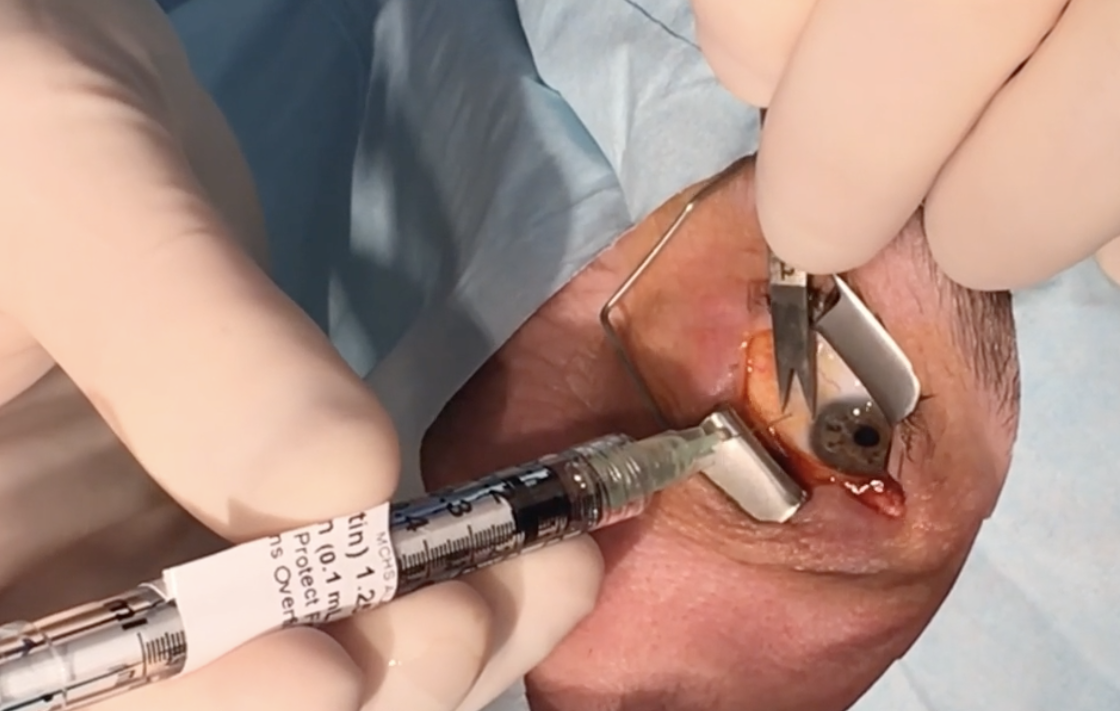 |
Endophthalmitis rate was found to be 0.045% after IVI of anti-VEGF or corticosteroids, which was significantly higher in steroids as opposed to anti-VEGF, and in bevacizumab or aflibercept as opposed to ranibizumab. Click image to enlarge. |
Post-intravitreal injection (IVI) endophthalmitis is a rare but potentially devastating complication, with many conflicting data reported over the years. In a new study, researchers investigated the incidence and clinical and microbiological characteristics, as well as the visual outcome, in IVIs endophthalmitis in two medical centers.
A total of 51,536 patients undergoing intravitreal injections between January 2018 and December 2019 were analyzed for post-IVI endophthalmitis. Of those, 23 cases of post-IVI endophthalmitis were diagnosed, yielding an overall incidence of 0.045; this rate was significantly higher in steroidal agents (vs. anti-VEGF agents) and in bevacizumab or aflibercept (vs. ranibizumab).
Cultures were positive in 56% of the cases (100% gram-positive bacteria and 76% coagulase-negative staphylococcus). Parameters associated with higher culture-positive rates included samples taken during vitrectomy, white blood cells on vitreous smear, the number of IVIs in the 12 months prior to presentation and the time interval from last IVI to diagnostic sampling.
At the six- and 12-month follow-up, the median change in VA was -1.10 and -1.02, respectively. Younger age and better BCVA at presentation were associated with better VA outcome, while positive culture result and systemic steroids treatment were each associated with the worse visual outcome.
The time interval from IVI to the first procedure was significantly associated with higher culture-positive rates. “This may allow a longer time for bacterial growth and thus a higher bacterial load, resulting in a higher rate of positive culture results,” the authors suggest.
Previous studies regarding the correlation between presenting signs and symptoms to culture results in endophthalmitis has been inconsistent. In this study, presenting signs and symptoms, BCVA at presentation or its decrease from the baseline were not associated with a higher rate of positive culture results. “These findings might be due to the narrow spectrum of culture results in our study (100% were gram-positive bacteria and 76% were CoNS positive),” the authors explained in their paper on the study. “Alternatively, it might be due to the relatively small number of endophthalmitis cases in our study.”
The rate of vision improvement (within one line from the baseline BCVA) compared to presentation was 78% and 74% at six- and 12-month follow-up, respectively, while 35% and 39% of the patients returned to their baseline vision at the six- and 12-month follow-up, respectively. These rates are comparable to other studies, the authors noted.
Patients who received systemic steroids had a worse visual outcome. “We found a 48% rate of oral steroids treatment, and our analysis revealed no difference in demographic characteristics, disease characteristics, presenting signs and symptoms, culture results, primary procedure and measured time intervals between patients treated with systemic steroids and patients that were not,” the authors wrote.
Davidov B, Ohayon A, Triviziki O, et al. Postintravitreal injection endophthalmitis: incidence, characteristics, management and outcome. Jour Ophthalmol. November 6, 2023. [Epub ahead of print.] |

